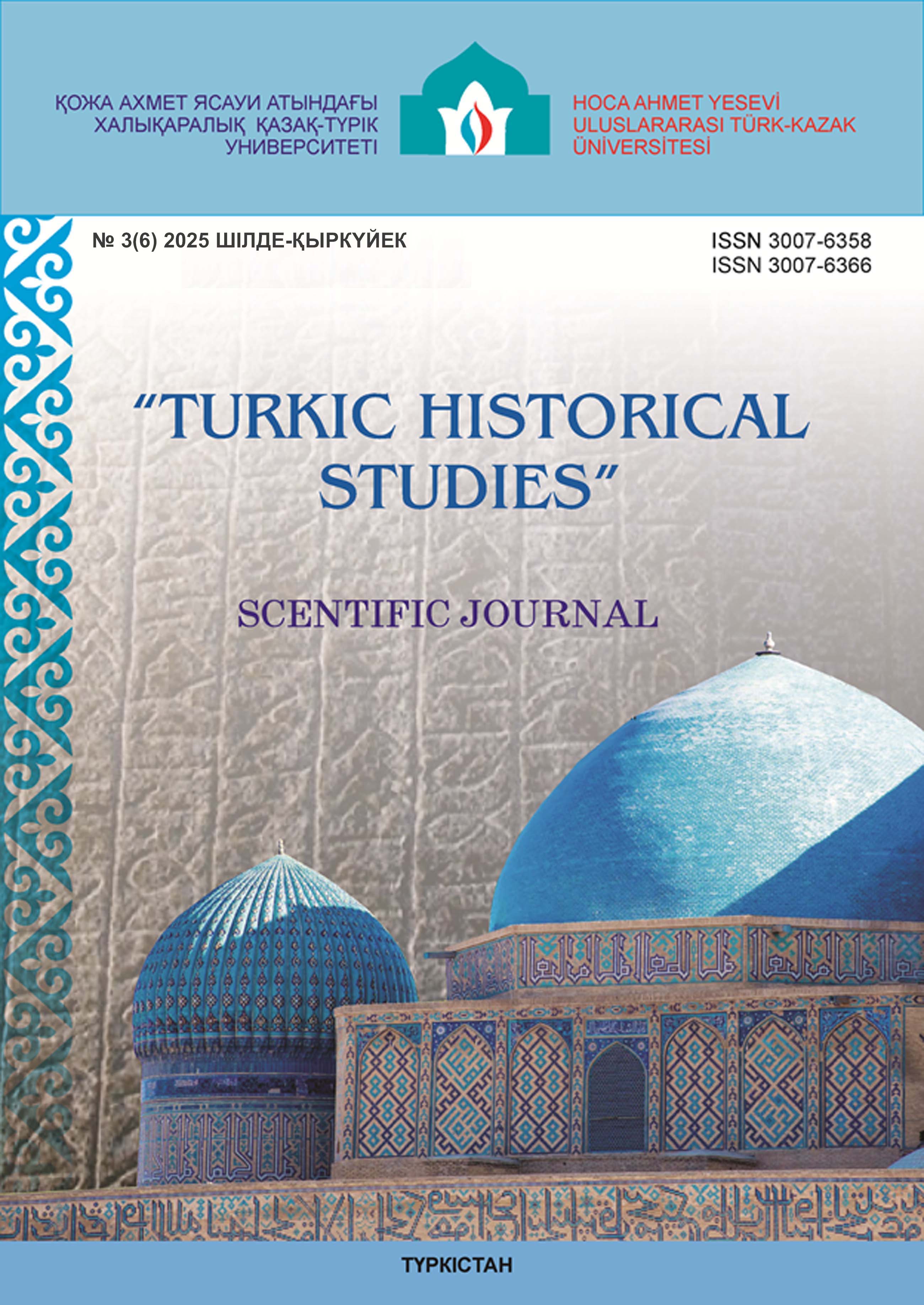ARCHAEOLOGICAL STUDIES OF THE SHUBARSU SETTLEMENT
43 37
Keywords:
South Kazakhstan, Kainarbulak River, Kounchin culture, Early Middle Ages, clay structures, ceramic complex, ash layers, ancient rituals.Abstract
The article presents the results of archaeological research of the Shubarsu monument, located on the northwestern outskirts of the city of Shymkent, near the Kainarbulak residential area, on the left bank of the river of the same name. Archaeological excavations at the Shubarsu sites, conducted in 2025, revealed typologically previously unknown objects in the region. The first is a tower-like construction made of specially prepared clay. Its base diameter is approximately 40 meters, with a height of 4.5 meters. The internal space of the structure, which has an oval shape (9×6.6 meters), was filled with densely compacted clay. Inside, two wells were discovered, containing fragments of pottery, animal bones, and ash layers buried under clay. The second structure – a platform adjacent to the "tower" and initially identified as a "manor" – is a clay platform approximately 1 meter thick, containing pits filled with earth-covered finds, including broken ceramics, animal bones, as well as stone and metal objects. The ceramic assemblage from these sites is preliminarily dated to the IV-VI and VII-VIII centuries AD.
The analysis of stratigraphy and archaeological materials indicates the ritual nature of the sites, associated with ceremonial practices of ancient Central Asian societies aimed at preserving the remains of food and sacrificial offerings.
The archaeological research at the Shubarsu site was conducted based on the state procurement contract No. 32 dated March 4, 2025, between the State Public Utility Company "Union of Museums of the City of Shymkent" of the Department of Culture, Languages, and Archives of Shymkent City and the Limited Liability Partnership "Engineering Archaeology".

